The Civilian Conservation Corps was president Franklin Roosevelt’s personal creation. One of the main tasks of the CCC was to reforest the United States, and for this reason, they were known as ROOSEVELT’S TREE ARMY.
The
CCC would recruit 250,000 unemployed young men to work on federal and state owned land for
"the prevention of forest fires, floods, and soil erosion, plant, pest and disease
control." In his message to Congress, Roosevelt declared that the CCC would
"conserve our precious national resources" and "pay dividends to the
present and future generations." "More important," he added, "we can
take a vast army of the unemployed out into healthful surroundings. We can eliminate to
some extent at least the threat that enforced idleness brings to spiritual and moral
stability." On 31 March 1933, Roosevelt signed the bill into law, and six days
later he ordered the formation of the CCC. His goal was to have 250,000 men in the forest
in three months.
The CCC rose to prominence during the Great Depression times, when millions of people
needed jobs. The "remains" these CCC camps can be seen throughout
Michigan.
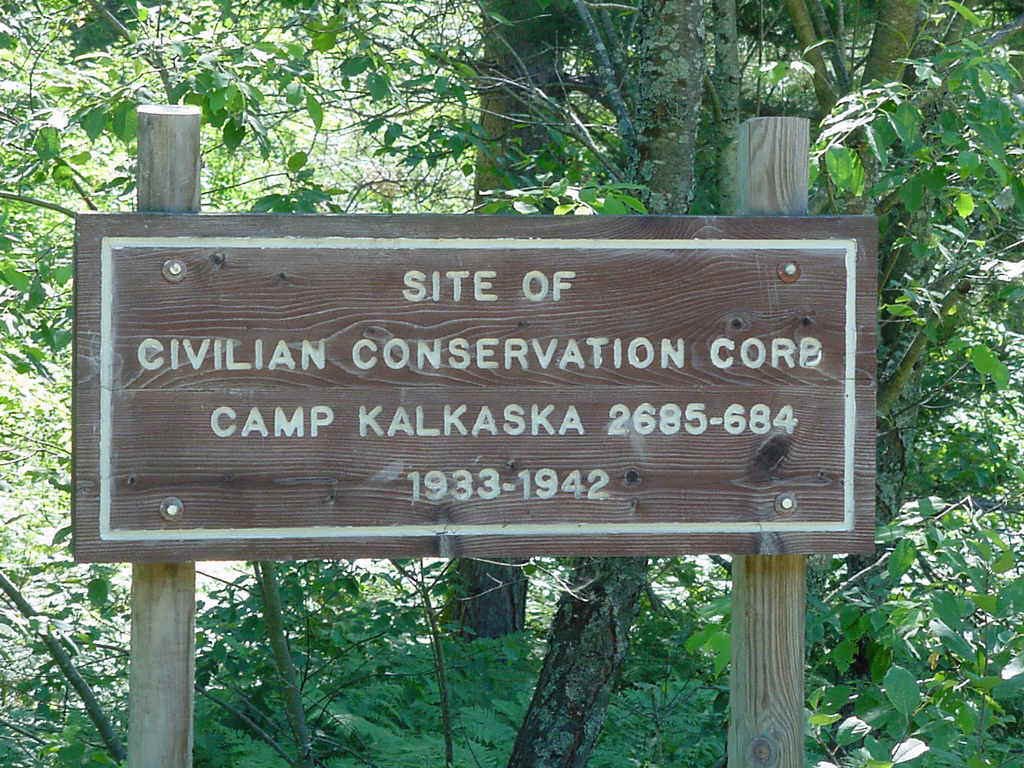
Source: Photograph by Randy Schaetzl, Professor of Geography - Michigan
State University
CCC workers had to move to the jobs. They were given room, board, clothing, medical,
and $30 per month, but had to send $25 per month back to their dependents. The
average Michigan CCC enrollee began his CCC experience by applying at a local selection
board. "Junior" applicants, who composed 90 percent of the corps had to be
single males between seventeen and twenty-three years old, unemployed, in need, U.S.
citizens and not attending school. They had to be capable of physical labor, not too short
(below 60 inches), not too tall (over 78 inches), nor too light (less than 107 pounds).
Other conditions that might disqualify an applicant included varicose veins, venereal
disease and a lack of at least three serviceable natural masticating teeth above and
below." If chosen, a candidate enrolled for six months and agreed to send at
least $22 of his $30 monthly wage home to his dependants. He underwent a physical
examination and vaccinations, took the CCC oath and received his clothing and supplies.
His clothing allotment included shoes, socks, and underwear, a blue denim worksuit and an
old army olive drab uniform for dress purposes. He also received a toilet kit, a towel, a
mess kit, a steel cot, a cotton mattress, bedding and a round metal disk with his service
number inscribed on it. Despite the army’s role in administering the CCC, the
camps were civilian rather than military in character. There were no military drills, no
manuals of arms and no military discipline. An enrollee’s day began with reveille at
6:00 A.M. After calisthenics came breakfast. CCC food was plain, nourishing and served in
abundant quantities. CCC Director Fechner described camp food as "wholesome,
palatable, and of the variety that sticks to the ribs." After breakfast, enrollees
policed the grounds and barracks before roll call and inspection. By 7:45 A.M. the men
were on their way to their work projects. Lunch was served in the field and lasted one
hour. By 4:00 P.M. the men had returned to camp for an informal recreation period that
lasted until dinner, which was served at 5:30. After dinner, enrollees either attended
classes or sought entertainment in nearby communities. There were no restrictions about
leaving camp in the evening as long as the men were back for lights out at 10:00 P.M.
CCC "camps" were set up in the National Forests, under coordinated supervision of the Army and the Forest Service jobs: planting seedlings, making fire breaks (the 1930's was a time of severe drought), making roads, making improvements that would generate tourism, cleaning up campgrounds, constructing telephone lines, etc. And as one mother explained to CCC Director Fechner, the corps was praiseworthy because "the boys are safe there. They are young and inexperienced and need someone reliable to teach them and I think the discipline and strictness are what they need now in their teenage period."
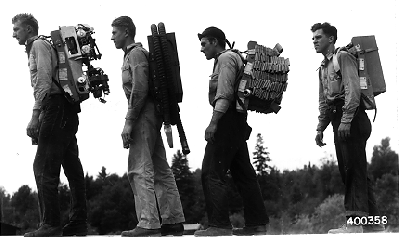
Source: Image courtesy Michigan History Magazine
Camp Raco
On 2 May 1933, two hundred young men from Detroit and Hamtramck arrived at an isolated
spot in the Hiawatha National Forest, west of Sault Ste. Marie. They set up tents and
dubbed the area Camp Raco. Designated Company 667, the Detroiters had been outfitted,
inoculated and briefly oriented at Camp Custer in Battle Creek before being shipped to the
Upper Peninsula. Within months there were forty-one similar camps across northern Michigan
housing nearly eight thousand young men.
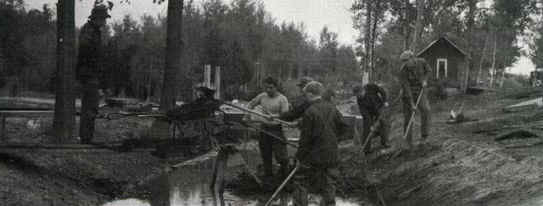
Source: Image courtesy Michigan History Magazine
In Michigan, however, the forestry schools at Michigan State College
and the University of Michigan lent tools to get the state’s first CCC camps going.
Many of the CCC enrollees in Michigan were natives of the state and did not have as far to
travel as did the enrollees from the urban areas of the East who served in the Far West.
Furthermore, in the fall of 1932 the Michigan Department of Conservation (now the
Department of Natural Resources) had made a survey to determine what projects might be
undertaken if federal funds were allotted for conservation work. Throughout the nine-year
existence of the CCC, the Department of Conservation worked closely with the federal
agencies in approving and inspecting work projects. The department also managed many state
CCC camps. (The others were under the aegis of the U.S. Forest Service, the National Park
Service and the U.S. Biological Survey.)
In June 1935 the New Republic dubbed the Civilian conservation
Corps "Roosevelt’s Tree Army." Since most of the Michigan CCC camps were in
national and state forests, enrollees planted seedlings, fought forest fires, eradicated
diseases - especially blister rust, which affects white pines - and built roads, trails,
towers and firebreaks to aid in the prevention of forest fires. During its first
twenty-four months, the Michigan CCC constructed over 3,000 miles of truck trails, spent
54,000 man days fighting fires, assembled 8 lookout towers, built 275 miles of firebreaks
and reduced fire hazards on some 40,000 acres. Reforestation also required the
establishment of nurseries. By 1936, one million hardwood seedlings were ready for
planting.
Once it became certain that the CCC would be more than a temporary
agency, Michigan officials undertook more complicated projects. Enrollees built two
bridges, one 103 feet long over the Muskegon River and another 170 feet long over the
Manistique River. They improved hundreds of miles of Michigan game-fish streams and built
log structures called deflectors to maintain pools for trout. During the first three years
of the CCC, over 75 million fish were reared in hatcheries and distributed in lakes and
rivers.
CCC activities extended to the Michigan state park system. The
seemingly endless list of improvements includes a bathhouse at Ludington State Park, a
40-by-80-foot limestone picnic shelter at Indian Lake State Park and a 29-by-43-foot
fieldstone caretaker’s residence at Wilson State Park, which was equipped with
running water, lights and other "modern conveniences."
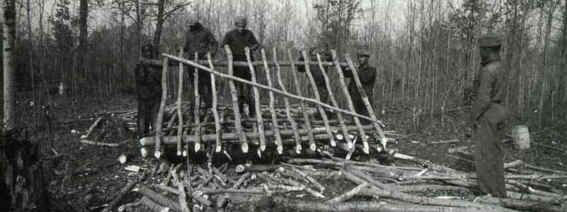
Source: Image courtesy Michigan History Magazine
The Michigan CCC also conducted groundwater surveys on several million
acres of Michigan land, prepared five hundred sample rock trays for distribution to
Michigan schools and , in cooperation with Michigan State College, prepared twenty farm
woodlots to show farmers how to properly thin wooded areas.
The Michigan CCC also engaged in numerous wildlife projects. At Camp
Cusino near Shingleton, an extensive moose research project - the only one of its kind in
the nation - took place. The CCC moved moose from Isle Royale to the Cusino State Game
Refuge where studies determined the animals’ food requirements, mating habits and
disease resistance. An experimental deer-feeding project was also conducted at Cusino.
Not far from Cusino, the men of Company 3626 established the Seney
National Wildlife Refuge in 1935. These members of Camp Germfask, the only U.S. Bureau of
Biological Survey camp in Michigan, transformed 95,000 acres of marshland into a domicile
for migratory wildfowl. A system of dams, spillways, ditches, dikes and pools was built,
and hundreds of acres of millet, celery and wild rice were planted as food for birds. More
heavy machinery was operated at Camp Germfask than at any other Michigan CCC camp.
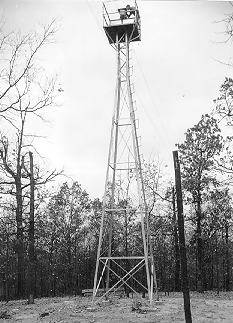
Source: Image courtesy Michigan History Magazine
CCC accomplishments in Michigan
Most Michigan CCC camps were in either national or state forests. The state’s only
National Park Service camps were on Isle Royale, which had been designated a national park
in 1931. Nationally, 90% of all CCC enrollees took classes. Over 100,000 men were
taught to read and write. Over 25,000 received eighth-grade diplomas, and 5,000 earned
high-school diplomas. During its later years, the CCC annually produced 45,000 truck
drivers, 7,500 bridge builders and 1,500 welders.
The accomplishments of the Civilian Conservation Corps are astounding.
In the nations’ first massive effort to restore its natural resources, the corps
employed over three million men. These men planted 2.3 billion trees, spent 6.4 million
man-days fighting forest fires and eradicated diseases and pests on 21 million acres of
land.
Michigan enrollees planted 484 million trees - more than twice as many
as any other state. They spent 140,000 man-days fighting forest fires, planted 156 million
fish and constructed 7,000 miles of truck trails, 504 bridges and 222 buildings. They
revitalized the Michigan State Park system, established Isle Royale National Park and
built campgrounds in Michigan’s national forests. Total CCC expenditures in Michigan
reached $95 million, and enrollees sent over $20 million to their dependants.
Some of the images on this page are from, and some of the text is paraphrased from, Roger
Rosentretter's "Michigan Time Capsules, Roosevelt's Tree Army, Michigan's Civilian
Conservation Corps.", 1986, Michigan Department of State. (Originally published in Michigan History
magazine.) Dr. Rosentretter teaches History of Michigan at MSU, and is the
editor of Michigan History magazine.
This material has been compiled for educational use only, and may not be reproduced without permission. One copy may be printed for personal use. Please contact Randall Schaetzl (soils@msu.edu) for more information or permissions.